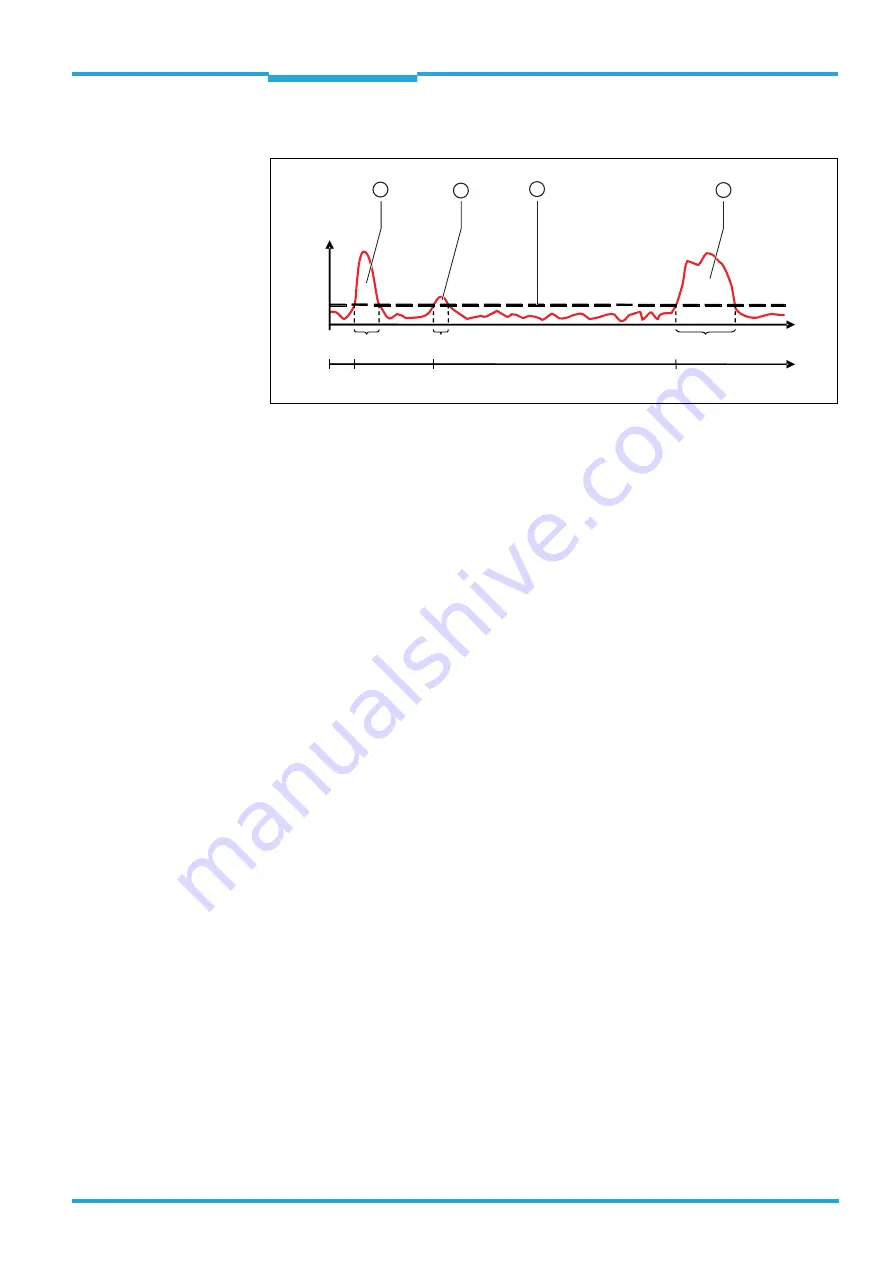
Operating Instructions
Chapter
3
LD-MRS
Product description
8012948/ZMQ0/2017-06-09
©
SICK AG · Germany · All rights reserved · Subject to change without notice
23
3.4.3
Multi-echo capability
Caption:
1
Example: echo of a window pane
2
Example: echo of a raindrop
3
Threshold voltage
4
Example: echo of an object
V(t) input voltage
t
time
d
distance
w
echo pulse width
A
glass panel
B
rain drop
C
object
V
th
threshold voltage
The LD-MRS has multi-echo capability.
Thus, it can gather and evaluate up to three echoes per transmitted laser pulse.
Once the echo reaches the photo diode receiver of the LD-MRS, the received intensity is
transformed into a voltage.
In the example shown in
, a reflected echo of a glass pane yields a high voltage over
a short period of time.
The echo of a rain drop, however, yields a very low voltage over a short period of time.
The echo of an object yields a high voltage over a longer period.
All three echoes are generated by reflections of a single transmitted pulse.
The threshold voltage V
th
separates the system noise from the relevant echoes. By compar-
ing, this threshold prevents system noise to be evaluated as measured value.
The LD-MRS uses the amplitudes above the threshold voltage
V
th
to evaluate the echo pulse
widths w
A/B/C
in that range.
Fig. 3-3:
Multi-echo capability
t
U
(
t
)
0
t
B
t
C
w
C
d
0
d
B
d
C
U
th
w
B
w
A
t
A
d
A
1
2
3
4















































